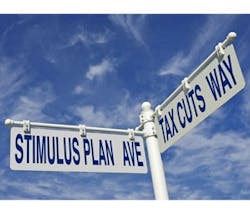Tax Incentive Plan to Avoid Commercial Real Estate Crisis
In response to $1.4 million in looming commercial real estate (CRE) loans coming due between now and 2014, Architecture 2030 has designed a tax-incentive program to help avoid a financial meltdown.
“The CRE Solution” is a three year plan with an energy reduction target and an annual tax deduction equivalent for achieving tiered benchmarks. For example, an energy-reduction target of 50% would denote a $6.00 tax deduction per square foot. The tax incentive would provide businesses with a financial incentive to renovate for energy efficiency, provide flexibility with different energy-reduction goal options (30%, 50%, 75%, or Zero-Net-Energy goals), and would also create an annual energy savings for the businesses, which would simultaneously increase the building’s property value.
As the report describes, a 28,000-square-foot commercial building with a 50% energy reduction target could receive approximately $250,128 in energy savings and tax deductions over three years. These savings would then help businesses to pay CRE loans, combat a 90% decrease in CRE transactions since 2007, and generate a proposed 1.3 million construction-related jobs through these renovations. Implementation requires that the existing Energy Efficient Commercial Building Tax Deduction (26 U.S.C. 179D) be increased from $1.80 to a $3.00 to $9.00 range, depending on a building’s specific energy reduction target.
The full report, “The Imminent Commercial Real Estate Crisis and The CRE Solution,” is co-authored by Edward Mazria and Kristina Kershner, CEO and President of Architecture 2030.
“Employed strategically, energy efficiency tax incentives can be multiplied significantly to reduce CRE loan defaults, stimulate CRE transactions, boost commercial building construction, and increase commercial property values,” says Kershner.
The full report is available at http://www.architecture2030.org/pdfs/theCREsolution.pdf
